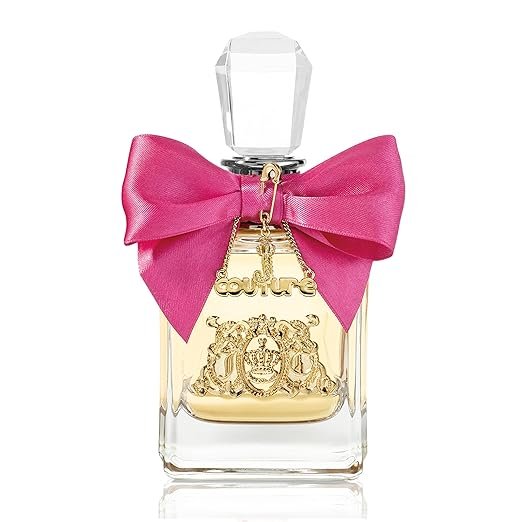Love can be a delicate dance, sometimes leading us down a path where we give too much of ourselves. It’s hard to pin down the moment caring transforms into overextending, where affection becomes an unseen sacrifice. When love begins to hurt more than heal, it’s time to step back and understand why.
For man, the pattern of women loving too much wraps its subtle chains around their hearts. They find themselves repeatedly drawn to those who aren’t emotionally available, trapped in a loop where they compromise their own values, mistaking intensity for intimacy. They often mistake this for devotion, unaware of how deeply it erodes their sense of self.
This article is an embrace for those who find themselves in the echo chamber of unbalanced love. It lays bare the signs, unravels the causes, and gently guides towards the healing journey. Here, you’ll learn about recognizing destructive patterns, reclaiming self-worth, and setting the kind of boundaries that protect hearts. Welcome to the path of healing from loving too much.
Signs of women who love too much
In a world that sings praises of grand romantic gestures and eternal devotion, there is a poignant reality of women who love too much. These are women who find themselves ensnared in bad relationships, who see love as inseparable from suffering and sacrifice. For them, a meaningful relationship is one defined by its intensity and the depths of self they’re willing to give, even if it means plunging into an unhealthy relationship.
It’s crucial to recognize the characteristics of women who fall into this pressing predicament. They are often nurtured in a dysfunctional family setting, which may leave them with an imprint that shapes their understanding of personal relationships. They may mistake turbulence for passion and inconsistent affection for a type of relationship that’s worth fighting for. Repeatedly, they indulge in a loveless relationship, holding on to the belief that love can conquer all, even when faced with destructive patterns.
Reflecting on Robin Norwood’s illuminating work, it becomes clear that these patterns are not merely choices but often stem from painful life experiences, potentially rooted in childhood trauma. The message of ‘Women Who Love Too Much’ hits home for many – highlighting the painful junctures between desire for a healthier relationship and the reality of their situation.
Being drawn to unavailable men
Closely allied with the syndrome of loving too much is the propensity to be attracted to men who seem mysteriously unavailable. These are the men who can’t offer stability or a stable relationship — they might be entangled in their own set of issues like unresolved childhood conflicts that bar them from engaging in attainable love. These unavailable partners might be embroiled with addictions, narcissistic behavior, or a deep-seated fear of intimacy, making a healthier relationship an elusive goal.
Women who love too much often endure these turbulent relationships because the men who seem ‘nice’ and available simply don’t provide them with the kind of emotional charge they’re conditioned to seek. They find themselves in an unstable relationship, ensnared in the hope that this time their unrelenting love will be enough to transform the unavailability into a secure and loving partner.
Finding nice men boring
This daunting perception that emotionally available men are ‘boring’ can be debilitating for a woman’s emotional wellbeing. It could be the camouflage for a deep-seated fear of genuine intimacy or a past littered with encounters of control and rejection. For such women, even the opportunity for choice in love feels marred by their inner turbulent needs.
The quest for stability and healthier relationships often warrants a conscious effort to break away from these negative patterns. It might involve turning to professional help, like psychotherapy, where therapeutic relationships offer new models of attachment. The process isn’t a quick fix but a journey towards healing emotional wounds that draw them toward unhealthy relationships and learning to appreciate the beauty of stability and peace in the love offered by healthy partners.
Compromising personal values for love
A compelling need to be loved can sometimes push women to compromise their personal values in the hopes of securing affection from a partner. This “relationship addiction” leads to tolerating bad people, ignoring red flags, and justifying harmful behaviors. The belief that giving more will eventually persuade their partner to reciprocate can be blinding, leaving them clinging to the shadow of freedom of choice rather than embracing it wholesomely.
Compromising personal values goes hand in hand with a lack of boundaries and an almost sacrificial narrative in love. The partner’s problems—addictions, anger issues, emotional detachment—are absorbed like painful sponges by these loving women, fostering a cycle of giving with little return. It’s a pattern pervading their existence, often inherited from a broken family or childhood devoid of security, creating individuals yearning for love but finding themselves imbued in destructive and painful iterations of it.
The message is clear – women trapped in the cycle of loving too much often need encouragement to recognize their value, rebuild broken self-esteem, and forge new, healthier patterns in love and in life.
Being drawn to unavailable men
For many women caught in the web of loving too much, they find themselves magnetically drawn to men who are unavailable. Whether it’s emotional detachment, prioritizing destructive habits, the haunting of unresolved childhood issues, or fear of intimacy—the heartache is palpable. It’s a situation where the quest for love often traverses a turbulent path.
Engaging with men who are married, absorbed in addiction, or showing narcissistic traits, women with these inclinations often mistake the pain for passion. The excitement of the chase, the allure of “fixing” someone, overshadows the reality of their emotional emptiness.
| Types of Unavailable Men | Impact on Women |
|---|---|
| Married Men | Emotional Turmoil |
| Addicts | Neglect & Disappointment |
| Fearful of Intimacy | Abandonment Issues |
| Narcissistic Traits | Lowered Self-Esteem |
The sadness of such attractions is, even when faced with rejection and abuse, these women persist. They may find kindhearted and emotionally present men lack the appeal, deeming them “boring,” not realizing that this is a reflection of their own ingrained belief that love must be earned through suffering.
In this carousel of unmet emotional needs, women find themselves chasing illusive safety and security, repeating unhealthy relationship patterns. Recognizing this pattern is the first step towards seeking healthier relationships and breaking free from the destructive cycle.
Finding nice men boring
In the journey towards building healthier relationships, many women may find themselves entrenched in the perplexing dilemma of considering “nice men” boring. This inclination, far from a mere preference, often casts light on deeper emotional complexities such as an aversion to intimacy, internalized sentiments of unworthiness, and a history speckled with rejection and domination.
Such behavior, reflecting a reluctance to engage in a meaningful relationship with a supportive partner, may necessitate embracing therapeutic guidance. Psychotherapy, particularly psychodynamic psychotherapy, can be instrumental, offering corrective emotional experiences within the safe haven of the therapist-client alliance. Women’s groups focusing on similar relational hurdles also provide much-needed camaraderie and support.
Engaging in this reflective and reparative process can be long yet worthwhile, uncovering a tapestry of personal history, from childhood traumas to adult rejections, that shapes relational dynamics. Exploring these historic roots often reveals the impact of those formative years on today’s choices, echoes of broken families or unstable relationships that manifest in the present.
Accepting the complexity of these feelings and patterns can be the first step toward transformation. As women embark on this path, the real opportunity for choice emerges, paving the way for healthier, more secure, and truly gratifying connections.
Compromising personal values for love
For those who find themselves compromising personal values for love, the path is often fraught with hope and heartache. Love, a beautiful endeavor by nature, becomes a source of pain when it pushes one to cross their own boundaries, seeking approval and affection. Here’s a glimpse into the reality these women face:
- Compromising Values: Values are the compass that guides us, but women who love too much tend to adjust their moral compass in the hope of winning a partner’s love.
- Ignoring Red Flags: What are often clear signs of a troubled relationship are misinterpreted as hurdles to overcome, not the dire warnings they truly are.
- Repeating Patterns: A deep-rooted need for turmoil leads these individuals to seek out partners that perpetuate familiar, chaotic dynamics, thus ignoring or undervaluing those who offer stability and kindness.
- Subconscious Needs: Stemming from a history of past experiences and possible traumas, some women are drawn to relationships that mirror the instability they’ve known rather than embrace the healthier relationships they deserve.
Recognizing these signals is the first step towards building a foundation for healthier personal relationships, one that is rooted in mutual respect and shared values, rather than a one-sided quest to secure love at any cost.

Causes of women who love too much
For women who find themselves in the throes of unrequited love and turbulent relationships, the factors that lead them there are complex and deeply rooted. The causes of why some women love too much are intertwined with emotional voids and unfulfilled yearnings for affection.
Often, these women are drawn to partners grappling with issues such as alcoholism, narcissism, or a pervasive fear of intimacy — barriers that significantly impede the capacity to form genuine, lasting emotional connections. The resulting relationships are fraught with emotional unavailability, making it nearly impossible for these women to find the love, safety, and security they so desperately seek. Left in their wake is a trail of perpetual dissatisfaction and pain.
The men that become the focal point of their affections may display a spectrum of negative behaviors — ranging from the abusive to the cold and distant. Such personalities reinforce the cycle of fruitless relationships, as these women strive valiantly to procure love from the very individuals who are least equipped to give it.
Tracing the lineage of these insecurities that plague women in their relationships often leads back to the tangled roots of their childhood. Early life experiences, especially ones marked by a dysfunctional or broken family, significantly influence the patterns that recur in adult relationships. The silent message transmitted through these experiences is a destructive pattern that embeds itself in the psyche, manifesting later as a consistent draw towards bad people and unsuitable partners.
Furthermore, the connection between substance abuse and the inclination to attract unhealthy partners cannot be understated — it’s a crucial understanding for women trapped within the snare of relationship insecurities. A profound comprehension of these dynamics can be a touchstone in the journey towards liberation from the shackles of loving too much.
Belief that trying harder will change the person
Many women trapped in the cycle of loving too much foster a conviction that by redoubling their efforts, by pouring even more of themselves into the relationship, they can catalyze a transformation in their partner. It is a misguided quest to convert a partner into the ideal lover, where past behaviors and forewarning signs are glossed over or completely dismissed.
They contort their own values, making excuses for troubling behavior, often partnering up with individuals who, in hindsight, represent the farthest thing from their ideal match. Red flags, rather than being recognized as distress signals, are seen as mere obstacles that can be surmounted with enough love and patience.
This relentless pursuit, fueled by the hope that they are the one who can instigate a meaningful metamorphosis, leads to an endless loop of unhealthy relationship patterns. These women cling tenaciously to the fantasy that their unwavering commitment and love is the missing piece to unlocking a fulfilling and loving partnership, often at significant emotional cost.
Obsession with thoughts of the individual
An obsession with thoughts of a particular partner can be a protective veil, shielding one from the vulnerability inherent in true intimacy. Underneath this fixation is a kaleidoscope of fears, including an aversion to being overwhelmed by a dominant personality that may echo the memory of a rejecting or controlling childhood caregiver.
These pervasive thoughts often act as a smokescreen for deeper psychological distress, potentially masking issues such as depression, anxiety, or an existential void. Escaping the vise of these obsessions is far from simple; it typically demands a multifaceted approach that includes psychotherapy and the communal support of groups dedicated to navigating similar struggles.
Addressing and unpacking these complex personality issues is not an overnight endeavor; rather, it is a protracted healing process. Through sustained therapeutic engagement, these women can begin to unravel the intricate web of their affections and gradually work towards a place of healthy self-love and truly meaningful relationships.
Belief that trying harder will change the person
The tender hearts of some women carry the weight of a poignant belief: that by pouring more love and exertion into a connection, they can metamorphose a partner into their envisioned ideal—be it in a turbulent or loveless relationship. This conviction often blossoms from a place of compassion, yet it seeds a garden of compromises and justifications, a landscape where red flags are not barriers but hurdles to be surmounted with affection and empathy.
Such women embark on a path where the stakes are their own values—sometimes set aside, as they endeavor to sculpt a person into a version they yearn for. They hold fast to the fantasy that their individual love can be the catalyst for transformation, a singular force potent enough to cultivate a more meaningful relationship from unyielding soil.
Key Characteristics of Women Who Love Too Much:
- Viewing challenges as opportunities: Hope that love conquers all
- Overlooking past behaviors: Believing they can change future outcomes
- Sacrificing personal values: Prioritizing another’s change over self-respect
- Entrenched in cycles: Repeatedly engaging in unhealthy relationship patterns
Yet, this mindset of relentless pursuit—the belief that “trying harder” will render a flawed union into a healthier relationship—often spirals into a cycle of frustration and heartache. As they champion change via unconditional love, they might overlook the fundamental truth: lasting change must come from each individual’s own volition, not solely from the desires of another. With gentle awareness, redirecting this boundless love toward building supportive, mutually uplifting partnerships can unlock the doors to true, reciprocal fulfillment.
Obsession with thoughts of the individual
In the realm of personal relationships, a particularly poignant struggle is an obsession with thoughts of an individual, which may manifest as the evasion of true intimacy. The root of these obsessions often lies in a fear born in childhood, where a dominant figure, perhaps a rejecting parent, imprinted a longing for control that continues into adulthood.
Underlying these recurring thoughts may be significant yet hidden psychological troubles such as depression, anxiety, or an existential crisis—concerns about the inherent meaning of life. Unmasking and tackling these issues is vital for emotional well-being.
Breaking the cycle demands dedication; it’s not an overnight fix. Psychotherapy and support groups create a sanctuary for healing, providing a place to voice fears and experiences—a step toward healthier relationships.
Therapy is a journey, sometimes a long one, but it’s a path that can lead away from dysfunctional relationships and obsessive thoughts toward a more balanced and meaningful connection with oneself and others.
Breaking the Cycle: Steps to Healing
- Acknowledge obsessive thought patterns.
- Identify underlying psychological issues.
- Seek professional help through psychotherapy.
- Participate in support groups.
- Commit to the extended process of resolving deep-rooted personality issues.
- Move towards forming healthier, more stable personal relationships.
Factors contributing to women who love too much
The journey toward understanding why some women find themselves entrenched in unhealthy relationships—where they love too much—is multifaceted. Among the maze of contributing factors, a common pattern is seeking affection from partners who are less inclined to reciprocate in meaningful ways. Women in the throes of this predicament often align with partners who are emotionally distant, lukewarm, or even outright abusive, their hearts tugged toward the very individuals who seem incapable of offering the love, security, and stability they deeply crave.
Compounding these challenges are the tendencies to fill the emotional void with addictive behaviors—substance abuse, excessive eating, and a relentless quest for approval. These actions often serve as a temporary salve for deep-rooted childhood issues. These women, sadly, become relationship addicts, ensnared in a painful cycle of yearning for a partner to provide the emotional sustenance that, tragically, remains perpetually out of reach.
Childhood traumas loom large in the background of these patterns, with early experiences fostering an appetite for the familiar sting of heartache. You’ll find that the type of relationship that feels “right” to them is often imbued with emotional pain—a reflection of their past agonies.
Lack of self-esteem and self-worth
Breathing life into one’s self-esteem is often key to mending the cracks caused by loving too much. A woman caught in the treacherous tides of such love often battles with her sense of value, seeing herself through a distorted lens. The pathway to recovery is marked by understanding that one’s worth is inherent and not a prize to be won through the validation of others.
Re-establishing a sturdy sense of self-esteem is like nurturing a garden following a harsh winter—it takes time, effort, and patience, but the results yield a landscape where healthier relationships can blossom. A woman imbued with self-worth is empowered to embrace her true self and better discern which relationships are nurturing and which are destructive, ultimately choosing partners who respect and honor her worth.
Previous traumatic experiences
Echoes of the past have a profound impact, carrying forward into the realm of adult relationships. For women caught in the cycle of loving too much, these echoes are often the reverberations of a dysfunctional childhood. In households where emotional expression is stifled and roles are rigid, the seeds of future relationship patterns are sown. It is within these constraints that the child learns to associate love with pain, silence with safety, and yearning with affection.
The seminal book “Women Who Love Too Much” delves into the raw, real-life accounts of how these childhood traumas shape the pursuit of love as adults. A pivotal element in the journey toward a healthier emotional landscape is the willingness to confront these traumas—to recognize the painful life patterns they’ve engendered and to step courageously into a process of change and self-discovery.
Unhealthy relationship models
Our earliest models for relationships—those we observe and internalize in childhood—influence our later choices in partners and friends profoundly. For women prone to love excessively, these models may have been shadowed by trouble, distance, or a lack of emotional availability. They may, paradoxically, view considerate and stable partners as dull, equating “love” with the intense emotional highs and lows experienced with less stable individuals.
In these relationships, it’s not uncommon for one’s personal interests, friends, and even sense of self to fall by the wayside in favor of prioritizing an emotionally unresponsive partner. The sensation of emptiness when alone can be so overwhelming that it overrides the torment experienced within the relationship. In recognizing and stepping away from these unhealthy patterns, and by learning to nurture a profound sense of self-love, women can pave the way toward a more stable, fulfilling, and reciprocal love—one that celebrates rather than consumes them.
Lack of self-esteem and self-worth
When we consider the phrase “women who love too much,” at the core, we often find individuals grappling with deep-seated issues of self-esteem and self-worth. These challenges can give rise to a consistent pattern of entanglement in bad relationships. Women may find themselves repeatedly enmeshed in unhealthy relationships, yearning for a meaningful connection but instead confronting a destructive cycle that echoes the instability of a dysfunctional family or past traumas.
Recovery is not just possible; it is a journey towards rediscovering one’s value. It’s about moving away from a loveless relationship and turbulent relationships towards healthier relationships that honor one’s worth. The message for women resonates with empowerment—transforming a painful life marked by an unstable relationship into one filled with self-acceptance and the freedom of choice.
| Steps to Rebuild Self-Worth | Description |
|---|---|
| Recognize Patterns | Identify and understand unhealthy relationship patterns. |
| Acceptance | Embrace one’s authentic self, flaws and all. |
| Establish Boundaries | Develop the ability to say no and prioritize personal needs. |
| Self-Care | Prioritize mental and emotional health. |
| Seek Support | Engage with supportive networks or professionals. |
Women who embark on this road to healing from relationship addiction and the aftermath of a broken family or childhood trauma, often find themselves stronger. They learn that security in childhood is not a determinant of one’s ability to have a stable and rewarding relationship in adulthood. With the opportunity for choice and a commitment to change, these women can shape a new story—one that reflects their true self-worth and promises healthier, more meaningful relationships.
Previous traumatic experiences
Growing up amidst the unpredictable waves of a dysfunctional family can leave deep imprints on one’s heart and mind, shaping the very essence of how love is perceived and pursued. When the expression of negative emotions is stifled, individuals can struggle to navigate the torrent of their own feelings in adulthood, often finding themselves in the throes of an unhealthy relationship.
The book “Women Who Love Too Much” spotlights this harsh reality, revealing the tether between childhood trauma and adult romantic engagements. It’s as though these women are ensnared in destructive patterns, attempting to heal old wounds through turbulent and unstable relationships.
Coming to terms with these painful life experiences can indeed be the crucible for transformation. By recognizing the vestiges of a loveless relationship or a broken family, there is an opportunity for choice—a chance to break free from the cycle. Embracing a healthier path leads to forging meaningful relationships that are nourished by mutual respect and freedom of choice, standing in stark contrast to the shadows of relationship addiction and bad people that once loomed large.
Key Aspects Influencing Relationship Choices:
- Childhood Environment: Dysfunctional family, lack of emotional security
- Communication: Limited, confined to rigid roles
- Emotional Expression: Repressed, leading to unhealthy patterns
- Adult Relationships: Attraction to turbulent, unstable dynamics
- Healing: Recognition of personal history, striving for healthier relationships
Unhealthy relationship models
When the joy of finding a meaningful relationship morphs into the pain of a loveless one, it’s a sign of slipping into unhealthy relationship models. These patterns, often rooted deep in one’s past, can trace back to tumultuous childhoods, with experiences of insecurity or trauma shaping how one connects in adulthood.
Many women, entangled in the web of loving too much, find themselves drawn to partners who are akin to walking on a tightroptes—turbulent, distant, or shrouded in emotional barriers. There’s a tendency to view ‘nice guys’ as lackluster, favoring the heart-wrenching dance with those who seem just out of reach. It manifests in a pattern where personal passions and friendships wane, laying down one’s own life tapestry for an unstable relationship that seldom brings satisfaction.
Characteristics of Women Who Love Too Much:
- Attraction to bad relationships
- Prioritizing partners over personal growth
- Feeling of emptiness sans partner
- Struggle with embracing self-love
Recognizing this addiction to tumultuous relationships is the preamble to change. Embracing self-love and acknowledging one’s right to a healthier relationship can pave the path to breaking free from these cycles. Only then can they rediscover the freedom of choice, and the opportunity for choice, that can lead to a harmonious and fulfilling personal relationship.

How to heal from loving too much
Healing from the deep-rooted affliction of loving too much can be akin to journeying back to oneself. It involves a transformative process that restores self-worth and promotes a new, healthy attitude toward relationships. This healing turns a painful life driven by destructive patterns into one of self-acceptance and wisdom. The book “Women Who Love Too Much” sheds light on these behaviors, offering poignant real-life insights that can pave the way to recovery. By understanding the reasons behind past failed relationships, one can begin to establish newer, healthier patterns in relationships. Successful recovery blossoms into a robust sense of self-worth, enabling women to no longer fall into the traps of tumultuous love.
Recognize patterns and behaviors
Recognition is the first significant stride toward healing. To love too much often means to love in a distance from oneself. It is crucial to identify and understand the roots of behaviors that tether us to unhealthy relationships. Often, these bad relationships are reflections of turbulent childhoods or a broken family’s unstable ties. For many women, the allure of the emotionally unavailable or ‘bad’ people reveals a discomfort with stability that may seem uneventful, pushing them towards those who require ‘fixing’. This compulsion to be the healer in the relationship often comes at the cost of neglecting personal interests and sustaining friendships. Realizing that these patterns are a choice, not a destiny, is an empowering step towards molding a more rewarding life.
Build self-esteem and self-worth
In the process of recovery, restoring one’s self-esteem is paramount. Liberating oneself from the need to be validated through a type of relationship that is more about addiction than affection leads to blossoming self-worth. Women who have embarked on this journey of recovery often share traits of resilience and a transformed outlook on relationships. They no longer perceive boundaries as obstacles but as the very framework that allows them to love in a more grounded and self-respecting manner. As self-worth flourishes, so does the acceptance of oneself, enabling a departure from the past’s obsessions and unresolved childhood issues.
Establish healthy boundaries
Not unlike building a sanctuary, healthy boundaries are the walls that protect one’s inner peace. Women who have fallen into the cycle of loving too much may have once seen these walls as unnecessary or even harmful. Establishing boundaries may mean no longer making excuses for a partner’s harmful traits or overlooking red flags out of a misguided conception of understanding. Healthy boundaries honor one’s values without incessant adjustment to appease someone else. It’s about maintaining self-respect and emotional well-being, which, in turn, prevents the recurrence of loving too much.
Seek therapy and support
Embarking on the road to recovery from a painful pattern of loving too much often requires professional guidance and a shoulder to lean on. Robin Norwood’s encouragement of seeking therapy, particularly psychotherapy with a psychodynamic approach, lays emphasis on understanding and healing the deep-rooted personal issues. Joining or starting a support group can supplement this therapeutic journey, providing a comforting array of voices that resonate with shared experiences. Therapy, especially one focused on the client-therapist relationship, can provide a corrective emotional experience, vital in learning different, more fulfilling ways of living. This commitment to change through therapy and support groups equips individuals with insight and practical tools to amend past destructive relationship patterns.
Recognize patterns and behaviors
Recognizing unhealthy relationship patterns and behaviors is a crucial step for women who find themselves repeatedly trapped in a cycle of bad relationships. Often rooted in childhood experiences, these patterns may lead to choosing partners who are troubled or emotionally unavailable, while dismissing those who might offer a stable and meaningful relationship.
Unhealthy Relationship Patterns:
| Type of Pattern | Description |
|---|---|
| Emotional Unavailability | Frequent attraction to partners incapable of providing emotional support. |
| Neglecting Self | Abandoning personal interests and friendships to overcommit to the partner. |
| Emptiness Without Partner | Feeling a sense of void when not in the company of the erratic partner. |
| Cycle of Torment | Remaining in a relationship that causes suffering and emotional distress. |
Women trapped in these cycles often have histories of dysfunctional family dynamics and may have had to cope with a broken family or bad people in their formative years, leading to a type of relationship addiction. They might have lacked security in childhood, leading to a continued search for stability in adulthood through turbulent relationships.
Breaking free requires acknowledging these patterns and understanding their origins. It opens up the opportunity for choice and the freedom to pursue healthier personal relationships, ultimately leading to a less painful life and healthier love experiences.
Build self-esteem and self-worth
The journey to building self-esteem and self-worth is pivotal for women who have found themselves in a cycle of loving too much. Recovery from this pattern is not merely an end to bad relationships but the beginning of embracing a life of healthier personal relationships and self-acceptance. The message of women finding their way out of the labyrinth of unhealthy relationship patterns is one of hope and resilience.
Restoration takes time and often requires confronting the pain of real-life struggles, such as childhood trauma or the shadows of a broken family. These women learn to discern between a meaningful relationship and a destructive one, breaking free from relationship addiction and the need for security in childhood that was not met.
Characteristics of Women in Recovery:
- Restored self-worth
- Healthier perspectives on relationships
- Self-acceptance
- Freedom of choice
- Resilience against turbulent relationships
A healed individual recognizes her worth independent of a type of relationship or presence of a partner. The opportunity for choice becomes empowerment, rather than a source of anxiety. The process of recovery not only renews their self-esteem but also imparts lessons on fostering healthier, stable relationships. Thus, self-worth becomes the compass for a woman’s freedom and the foundation for all forms of love in her life.
Establish healthy boundaries
Establishing Healthy Boundaries
Loving deeply and selflessly is a beautiful quality, but when it crosses into the territory of loving too much, it may signal the absence of healthy boundaries. For women entangled in this dynamic, establishing boundaries is not about building walls but about drawing lines that honor their values and emotional well-being.
Embracing Boundaries: The Road to Healthier Relationships
- Recognize Your Worth: Know that you deserve a meaningful relationship where mutual respect is the foundation.
- Identify Your Limits: Clearly define what is acceptable and what isn’t in terms of behavior and treatment from your partner.
- Communicate Clearly: Convey your boundaries to your partner calmly and assertively. Do not make excuses for others’ poor behavior.
- Stay Firm: Resist the urge to adjust your boundaries in hopes of winning more love or approval.
- Spot Red Flags: View warning signs not as challenges to overcome with love but as indicators of a potentially unhealthy relationship.
- Seek Support: If you come from a broken family or a dysfunctional family background that may contribute to destructive patterns, consider professional guidance to help you.
Healthy boundaries are essential to maintain self-respect and prevent falling into a cycle of giving too much. Embracing them is an act of self-love and a step towards forming stable and fulfilling personal relationships.
Seek therapy and support
Navigating the tangled web of bad relationships is a challenge that many women face, often carrying the weight of a past marked by dysfunctional families and destructive patterns. It’s particularly hard for those who have experienced painful life events and childhood trauma that might have paved the path towards recurrent unhealthy relationships. The profound message of Robin Norwood’s work is a beacon of hope, offering a guide for women seeking a meaningful relationship to replace the turbulent ties that have brought them sorrow.
Addressing these concerns, Norwood presents a twofold approach that encourages a blend of professional help and community support. Therapy, especially one with a psychodynamic focus, can delve into the complexities of personal relationships and shed light on unhealthy relationship patterns. Such therapy provides a secure space where clients can explore and mend the emotional scars of their real lives, all while rewriting their narrative for healthier relationships.
In the therapeutic alliance, women stand to gain a corrective experience—one that may compensate for a security in childhood they might have missed. It is this newfound stability that opens the doors to more stable relationships. Complementing psychotherapy is the solidarity found in women’s support groups. Here lies the opportunity for choice, for voices to be heard, and shared experiences to be a pillar of strength.
To break free from the shackles of relationship addiction and loveless connections, commitment is key. The following strategies are recommended:
- Psychotherapy: Engage in long-term therapeutic practices that emphasize personal history and existential questions.
- Women’s Group: Find solace in the company of others who empathize, understand and offer a supportive network.
- Continuous Effort: Embrace the freedom of choice to invest time and emotional work for a life that’s liberated from unstable relationships.



